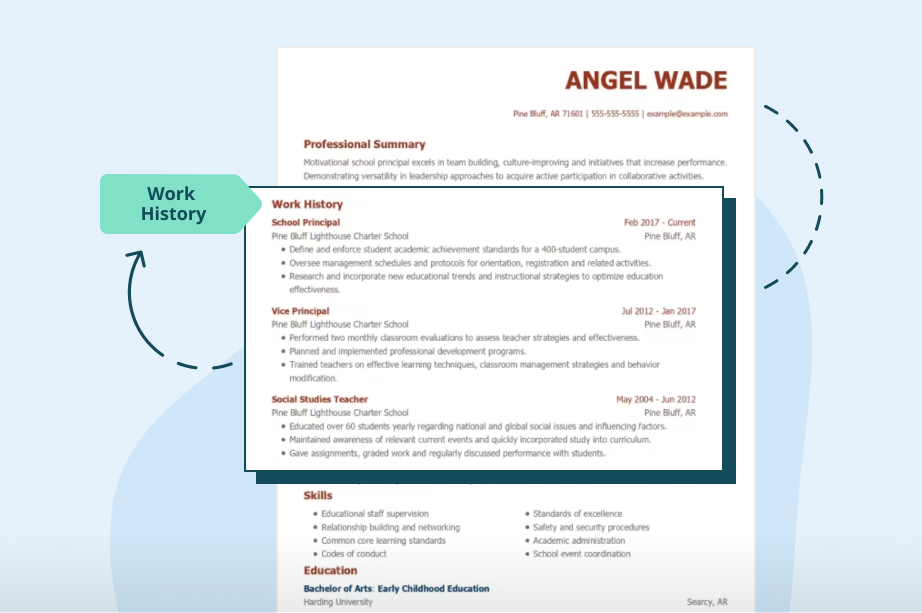

![]()
The functional resume format is also known as a skills-based resume. This flexible, customizable layout works best for career changes, work gaps, freelancers and first time job seekers. Read our helpful guide and functional resume samples to prepare for your job search.
Want a stronger resume? Try our resume templates. Simply edit and download. Plus, you’ll get ready-made content to add with one click using our Resume Builder.
Or view our sample resumes made with our professional templates.
The functional resume is a skills-based resume that downplays your work history. You may ask, “what does a functional resume highlight?” A functional resume can highlight your skills, match them to the job posting and increase the chances of getting an interview, even without the required experience. This format allows you to market your knowledge and downplay potential red flags like a lack of formal expertise or career gaps.
A functional resume features the following resume sections:
The functional resume places your formal work experience toward the bottom of the page and emphasizes your technical skills and abilities. Instead of starting with career highlights, a functional resume format allows you to explain how your career goals align with the position to which you are applying.
A functional resume features multiple detailed skills sections.
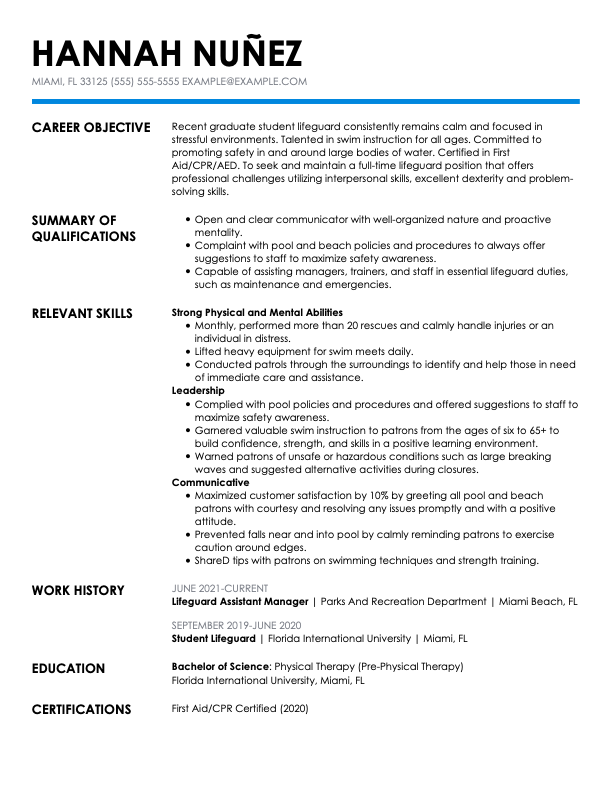
Although the functional resume offers a professional strategy to share your skills and accomplishments, the customizable aspects of the format make it a risky choice for most job seekers. You should only use the functional resume if you fall under the following criteria.
If you have 10 years or more of experience, try the chronological format. This resume format puts the greatest focus on your work experience, starting with the most recent job, and gives recruiters a clear overview of your top achievements.
Use a hybrid/combination resume if you have between three and nine years of experience. This type of resume combines the best of the chronological and functional formats, and promotes your expertise and skills.
These two formats are safer because they use five standard resume sections that are recruiter and ATS-friendly (applicant tracking systems.)
Before you start your resume, make a list of your skills organized by category or job title. Be ready to provide examples of how you used each skill to achieve your career goals. If you want additional information on how to nail the writing of each specific section, check out our Ultimate Guide on How to Write a Resume.
Most resumes require the same contact information: full name, phone number, professional email address and general location. You can add information like job-relevant social media accounts or hyperlinks to your professional website or online portfolio as needed.
Sample functional resume contact information:
Most hiring managers spend less than seven seconds scanning your resume before they decide to read on or discard your application. A resume summary sits near the top of your resume to help you persuade hiring managers to review it carefully rather than toss it. Use a summary statement if you have over three years of experience in a related job field or a resume objective if you’re changing careers or have little related experience.
Example of a functional resume resume summary:
Talented Digital Graphic Designer with a strong focus on web page design, promo design and email marketing design. Skilled at creating visually appealing and effective digital assets. Seeking contract opportunities to leverage my expertise in enhancing online presence and driving engagement.
Here’s where a functional resume veers from a timeline-based format like the chronological or combination resume. Instead of tying your accomplishments to previous jobs, you’ll use an optional summary of qualifications to outline three to four major skills or accomplishments from your entire experience history, followed by additional skills sections.
Here’s an example of an effective summary of qualifications from a freelancing graphic designer.
Functional resume sample:
Summary of Qualifications:
A summary of qualifications only covers a few job-relevant skills. You can create additional skills sections to highlight the rest of your skills, accomplishments and relevant responsibilities. You can list this information under skills sub-sections like interpersonal, soft, hard or technical skills. These skill sections will vary based on your career and relevant resume skills.
These two skills sections demonstrate how you can highlight additional accomplishments under job-specific sections to help promote your qualifications to hiring managers.
Functional resume examples of skills:
Design Skills
Marketing Skills
In the functional vs. chronological resume debate, this skills-based format helps you downplay employment red flags like short-term jobs, job hopping,and work gaps by only adding your previous job titles, employers and years of employment. Don’t add the months of employment or related job responsibilities. Instead, highlight your skills and job knowledge in the previous sections.
As you can see in the following example, this graphic designer shares their previous job titles and employers but reduced their employment dates to just the year.
Example of a functional resume work history:
Digital Graphic Designer (Contract)
Bay Leaf Marketing
Digital Graphic Designer (Contract)
Southwest Digital marketing
The last section of your resume should include your academic degrees and certifications. You can see how this professional adds this information to the end of their functional format resume.
Sample functional resume education section:
Education:
Bachelor of Fine Arts in Graphic Design | University of Houston,
Houston, TX | May 2020
Certifications:
Adobe Certified Expert (ACE) in Adobe Creative Suite | Coursera | 2021
UX/UI Design Certification | Google | 2020
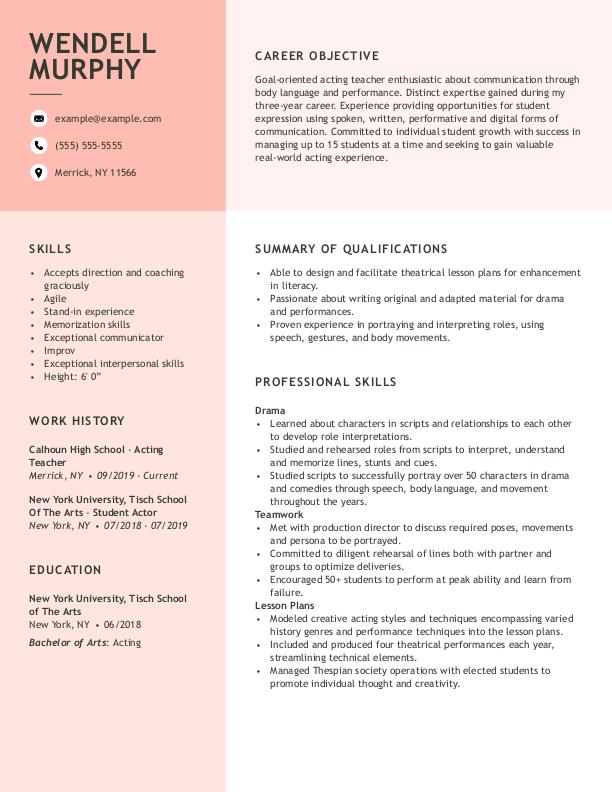
Use this Template
Acting Teacher Resume
This acting teacher uses the functional resume to highlight their knowledge of different acting techniques and dialect training.
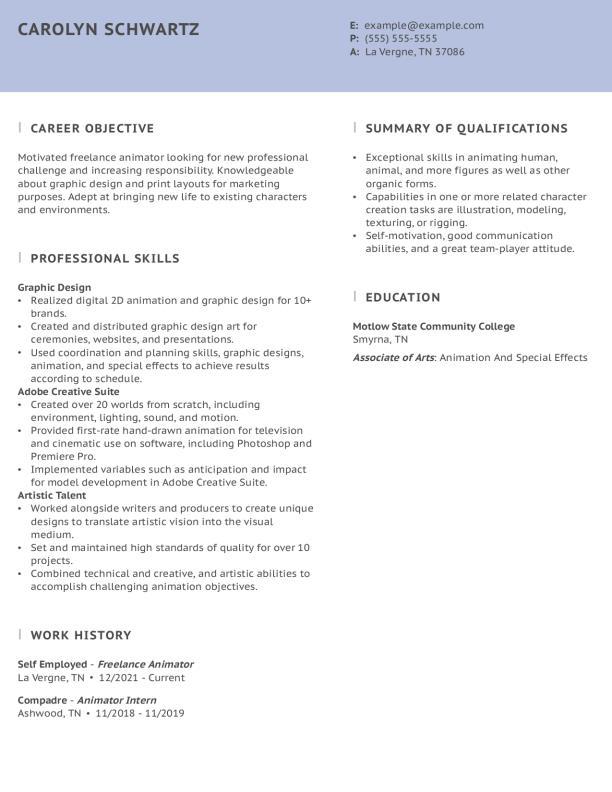
Use this Template
This animator uses a functional to outline their familiarity with different animation tools and related experience in animation and graphic design.
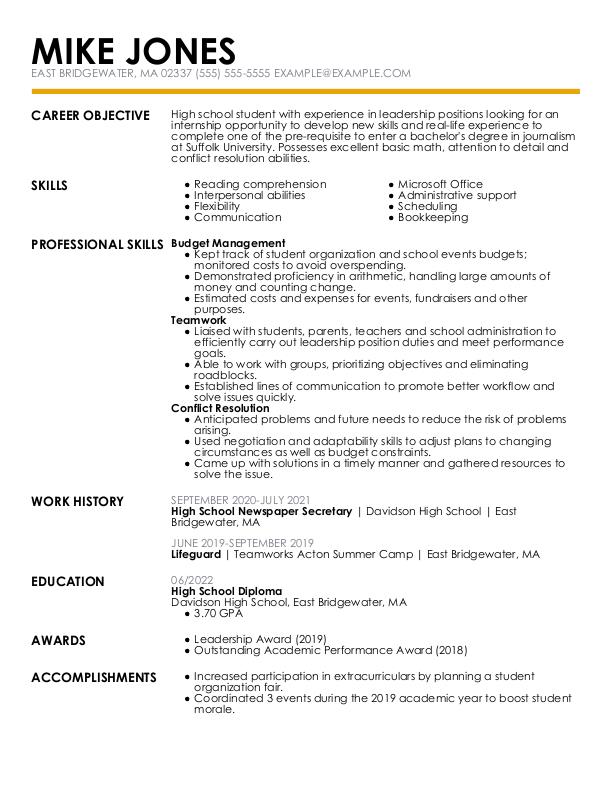
Use this Template
High School Student
As a recent high school graduate without a previous job, this recent graduate uses the functional resume to showcase their transferable skills.
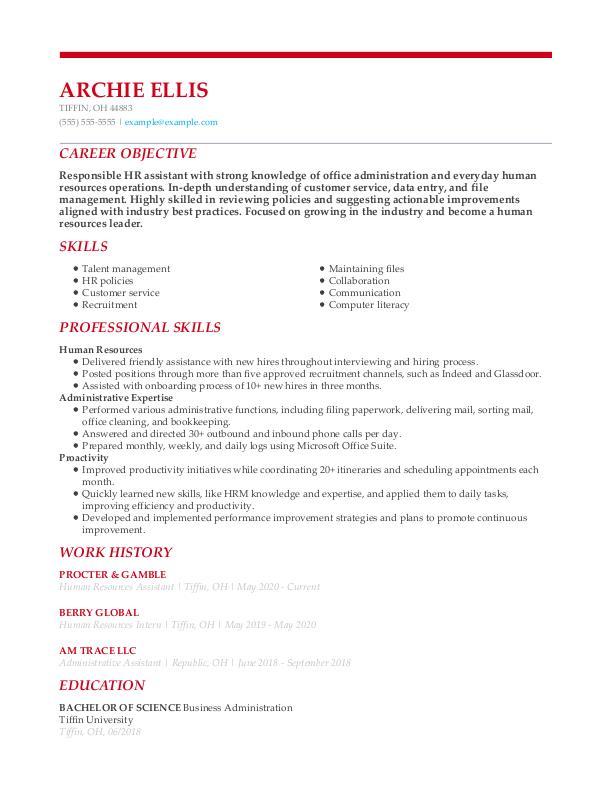
Use this Template
Human Resources Resume
As an HR assistant, this job seeker uses this format to showcase their administrative, productivity and HR knowledge.
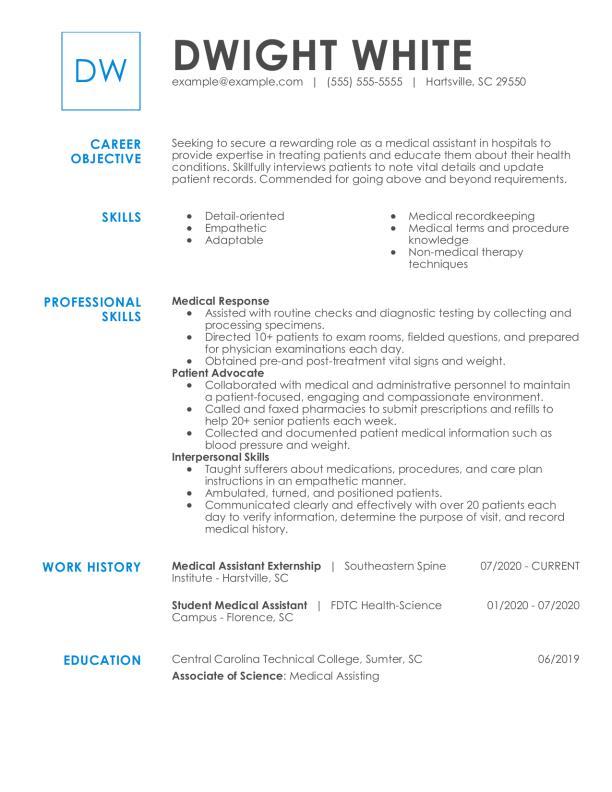
Use this Template
Medical Assistant Example
This medical professional uses this format to highlight their training, patient advocacy and interpersonal skills.
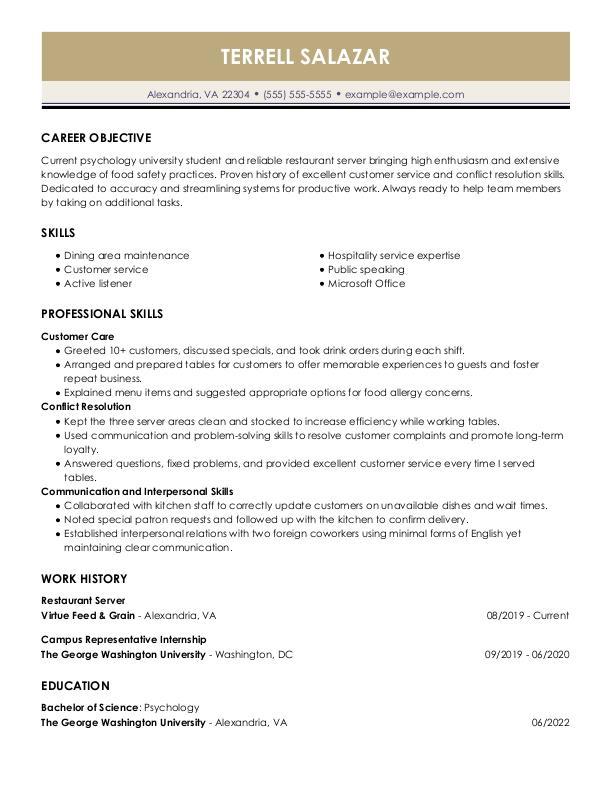
Use this Template
Restaurant Server Resume
This front-of-house staff member uses a functional resume to highlight their customer service, food handling and communication skills.
Neonatal Nurse Example
This nursing professional uses the functional resume to highlight their highly specialized training working with fragile patients.
Graphic Designer Resume
This creative professional uses this resume format to highlight their knowledge of various design tools and resources, as well as practical skills.
Software Engineer Sample
This programming specialist uses a functional format to share their knowledge of programming languages, software engineering and testing.
[City, State ZIP Code]
[Your Email Address]
[Your Phone Number]
[LinkedIn Profile URL]
Resume Summary
[Insert your summary here. This should be a brief statement highlighting your core qualifications and career goals.]
Summary of Qualifications
[Type of] Skills
[Type of] Skills
[Type of] Skills
Work History
[Job Title #1] | [Company Name #1]
[Job Title #2] | [Company Name #2]
Education
[University/College Name], [Location]
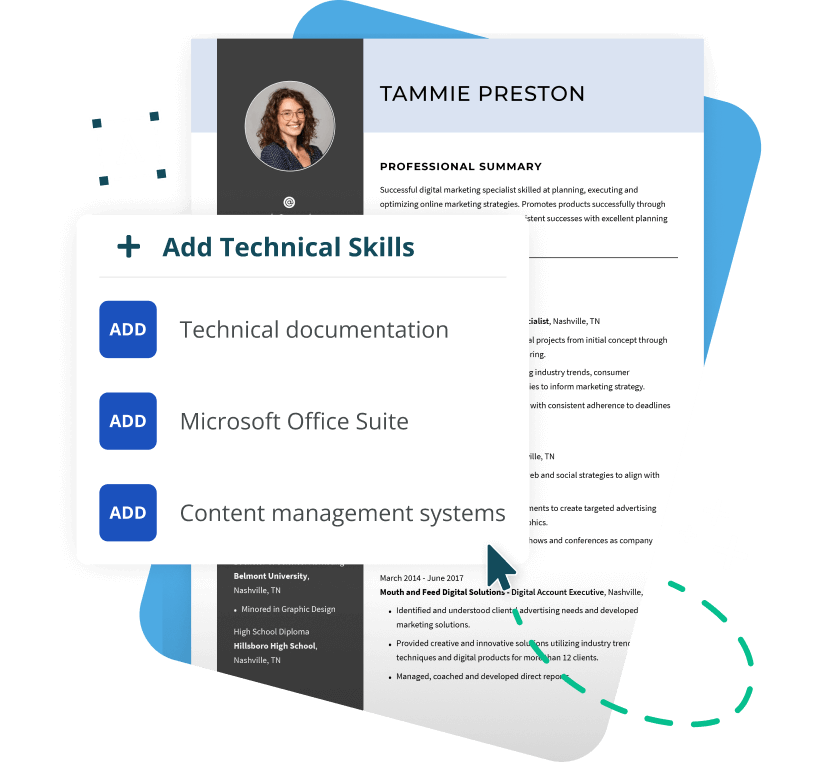
Although the previous resume template is a good starting point, you can improve your functional resume with professional document designs. Our Resume Builder features: